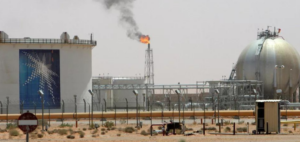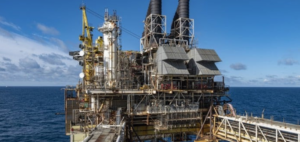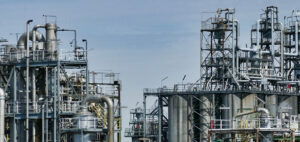European natural gas prices rose on Monday, boosted by disruptions to liquefied natural gas supplies from Australia due to a strike, while oil prices weakened on profit-taking, remaining close to their highest levels since November.
Increase in European natural gas prices due to Australian LNG strike
At around 15:40 GMT (17:40 in Paris), the Dutch TTF futures contract, considered to be the European benchmark, was up more than 6% at 36.75 euros per megawatt-hour (MWh).
“The gains were mainly driven by strikes at Australian LNG facilities which have now come into effect”, commented analysts at Energi Danmark.
Employees of US energy giant Chevron began rotating strikes on Friday to demand higher wages at the company’s gas production sites in Australia.
“Chevron’s facilities account for almost 7% of the world’s LNG supply,” explain DNB analysts.
Asian buyers in need of liquefied natural gas could therefore be driven to outbid their European counterparts and turn to the USA to make up for the shortfall in Australian supply, boosting demand. The war in Ukraine has increased Europe’s dependence on liquefied natural gas, as the Old Continent strives to reduce its purchases of Russian gas. This dependence has led to “greater price volatility, as the market is more exposed to disruptions in global demand and supply”, continue DNB analysts. At the same time, “the maintenance of Norwegian infrastructures is continuing”, also reducing the supply available on the market, continue analysts at Energi Danmark.
Oil prices remain high despite recent profit-taking
On the oil front, Brent crude for November delivery lost 0.31% to $90.37 a barrel. The US equivalent, a barrel of West Texas Intermediate (WTI) for October delivery, slipped 0.50% to $87.07. Oil prices were catching their breath due to “profit-taking after recent gains”, explained DNB analysts.
The two global benchmarks for black gold are at very high levels, driven by the extension of production and export restrictions by Saudi Arabia and Russia until the end of the year. On Monday, they hit new highs since November, at $91.45 for Brent and $88.15 for WTI.
The cuts by the two heavyweights of the Organization of the Petroleum Exporting Countries and their allies (Opec+) have “virtually guaranteed that the oil market will remain tight until the end of the year, meaning that any easing in demand will only produce buying opportunities”, and not a sharp drop in prices, says Edward Moya of Oanda. Concerns persist “on the demand side, due to the weakness of the Chinese economy”, moderates Mirabaud analyst John Plassard.
Why does it matter?
In commercial, financial and energy market terms, disruptions to liquefied natural gas supplies in Australia are having a significant impact on European markets. Rising natural gas prices could bring challenges for businesses and consumers in Europe, while potentially boosting US exports to Asia. As far as oil is concerned, persistently high prices could influence investment decisions and energy policies in oil-importing countries, while creating opportunities for investors in the energy sector.






















